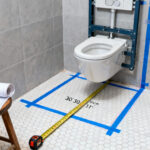Picture this: You’re standing in your client’s stunning new kitchen. Every finish is perfect, the layout is brilliant, and the indoor lighting I designed makes the whole space feel like a magazine cover. Then, they open the glass doors to the backyard and… nothing. A sad, dark patch of grass and a lonely patio chair. It’s a void. They have this incredible asset—an entire outdoor room—and at night, it completely disappears.
That’s the problem. We obsess over our indoor spaces but treat our yards like an afterthought. A well-designed garden or lawn isn’t just about mowing and pulling weeds. It’s about creating an experience. It’s another room of your house, just without a ceiling. And like any room, it needs a solid foundation, thoughtful “furniture” (plants and structures), and, of course, the magic of good lighting to bring it to life. Forget the generic advice. Here’s how you actually build an Outdoor Space that’s as thoughtfully designed as the rest of your home.
Laying the Foundation: Planning & Smart Preparation
Everyone wants to jump to the fun stuff—picking flowers and fire pits. But just like you can’t install a beautiful chandelier on a crumbling ceiling, you can’t build a great garden on a poor foundation. Getting these initial steps right saves you so much time, money, and frustration down the road. This is the unglamorous work that makes all the glamorous stuff possible.
1. Analyze Soil Composition for Optimal Plant Growth
You know what people always ask me? “Caleb, what plants should I get?” And my answer is always, “I have no idea until you know what’s in your soil.” Trying to garden without knowing your soil’s pH and nutrient makeup is like trying to cook a gourmet meal blindfolded. You’re just throwing expensive ingredients into a pot and hoping for the best. A simple soil test is the single most important, most-often-skipped step in any garden project. It’s the blueprint for everything else.

Don’t just guess. Get a soil test kit from a local university extension or a reputable lab. It will tell you exactly what you have and exactly what you need to add. This isn’t just noise; it’s data. And good data prevents bad decisions. Following a soil report means you stop wasting money on generic “all-purpose” fertilizers that might be doing more harm than good. Instead, you’re giving your plants exactly what they need to thrive, making them stronger, healthier, and more beautiful. That’s the foundation for a garden that looks expensive, even if it wasn’t.
Now that you’ve handled the ground beneath your feet, let’s talk about the single biggest energy source for your garden: the sun.
2. Determine Sun Exposure Zones for Smart Plant Placement
I make my living as a lighting designer, so let me tell you—light is everything. And in the garden, the sun is your only bulb. The most common mistake I see is someone falling in love with a “full sun” plant at the nursery and trying to force it into a shady corner of their yard. It’s a guaranteed way to kill a plant and waste your money. A plant that needs six hours of direct sun won’t survive on two. It’s a non-negotiable, technical requirement.
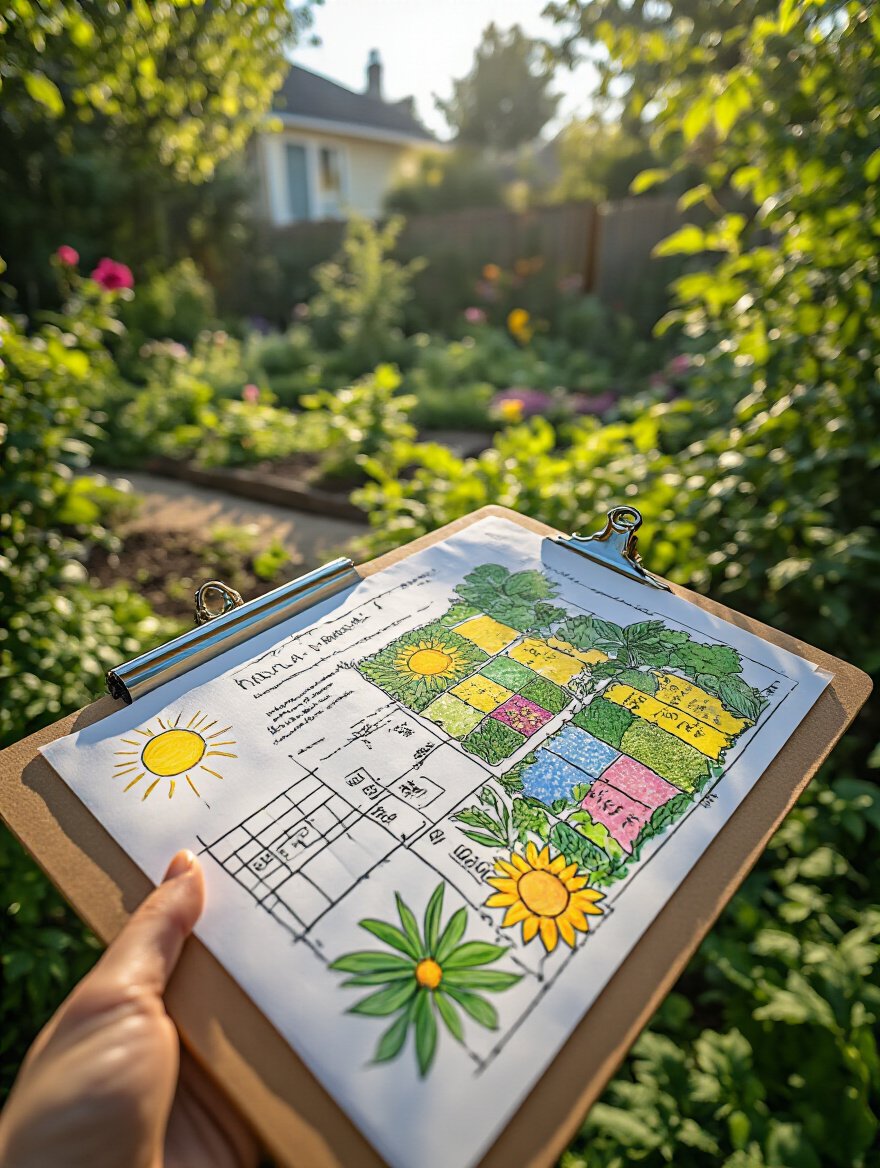
So, here’s the shortcut: Grab a notepad and map your yard like a lighting designer. Spend one sunny day drawing a rough sketch and noting where the sun hits at 9 a.m., noon, and 4 p.m. You’ll quickly see you don’t have one yard; you have multiple “light zones.” Full sun, partial shade, deep shade. Once you have this map, plant selection becomes ridiculously easy. You’re not guessing anymore. You’re matching a plant’s specific light requirements to the available light in your “room.” It’s the simplest and most effective way to ensure your garden thrives.
Once you know where the light falls, you can start building the “walls” and “furniture” of your outdoor room.
3. Design a Cohesive Layout with Integrated Hardscape Elements
Can we talk about the floating patio for a second? It’s my pet peeve. It’s that sad slab of concrete just sitting in the middle of a lawn, connected to nothing. A patio, a walkway, or a retaining wall shouldn’t feel like an afterthought. These hardscape elements are the “architecture” of your garden. They define the “rooms”—a space for dining, a corner for lounging, a path to guide the eye. When you plan them together with your green spaces, the whole yard starts to feel intentional and unified.
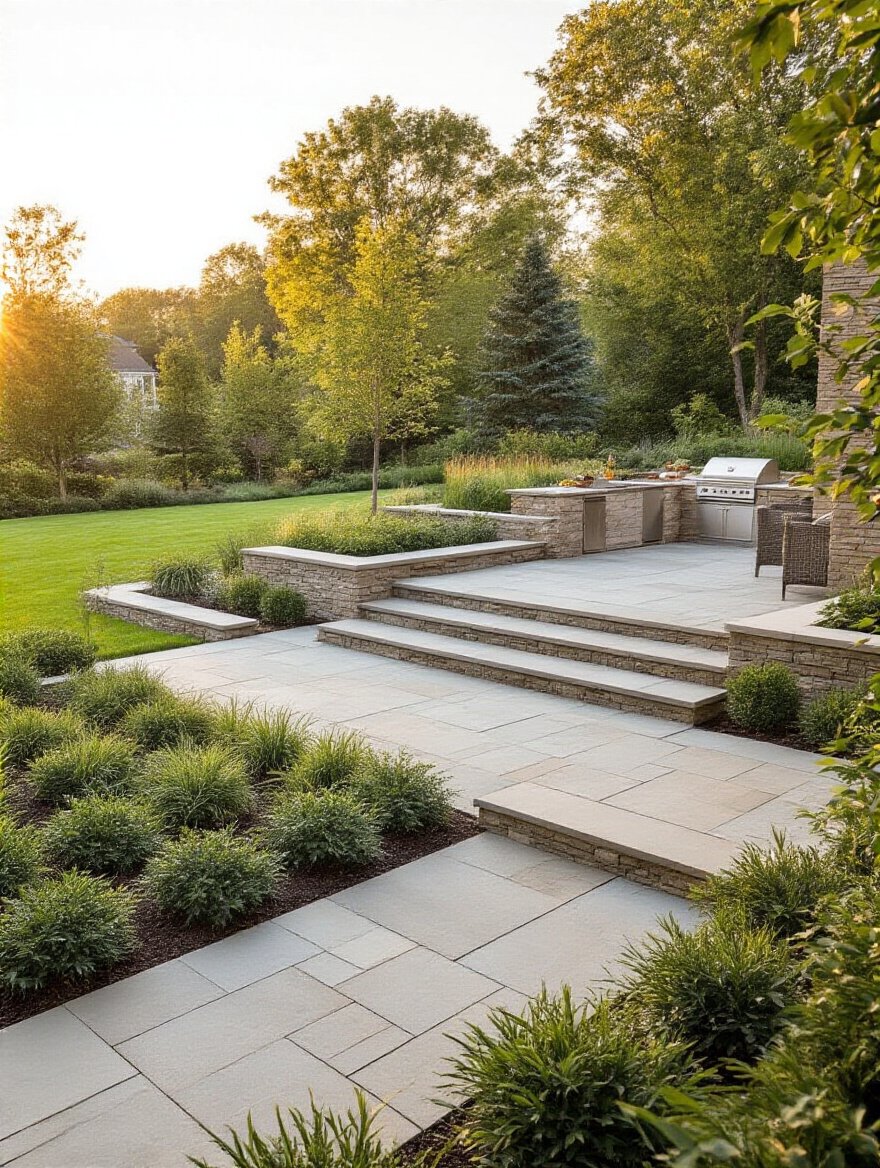
The real story here is about flow. A great design guides you through a space. Your patio should flow logically from the back door. Your walkways should lead you to interesting focal points—a beautiful tree, a water feature, or a quiet bench. Use materials that complement your house. Think of it like this: your hardscape is the bones. The plants are the decor. When the bones are right, the space just works. It feels bigger, more functional, and a hundred times more inviting.
With the structure in place, let’s talk about choosing the right “decor” that won’t require a ton of effort to maintain.
4. Select Drought-Tolerant Plants to Conserve Water Usage
Everyone says you need a lush, green English garden. But what they don’t tell you is that unless you live in England, that look requires a heroic amount of water and work. I used to think the same way until I saw a client’s stunning garden in a dry climate. The secret? They weren’t fighting the environment; they were working with it by using drought-tolerant plants. These aren’t just cacti and rocks. We’re talking about beautiful grasses, stunning sages, and vibrant succulents that look incredible without you standing over them with a hose every day.
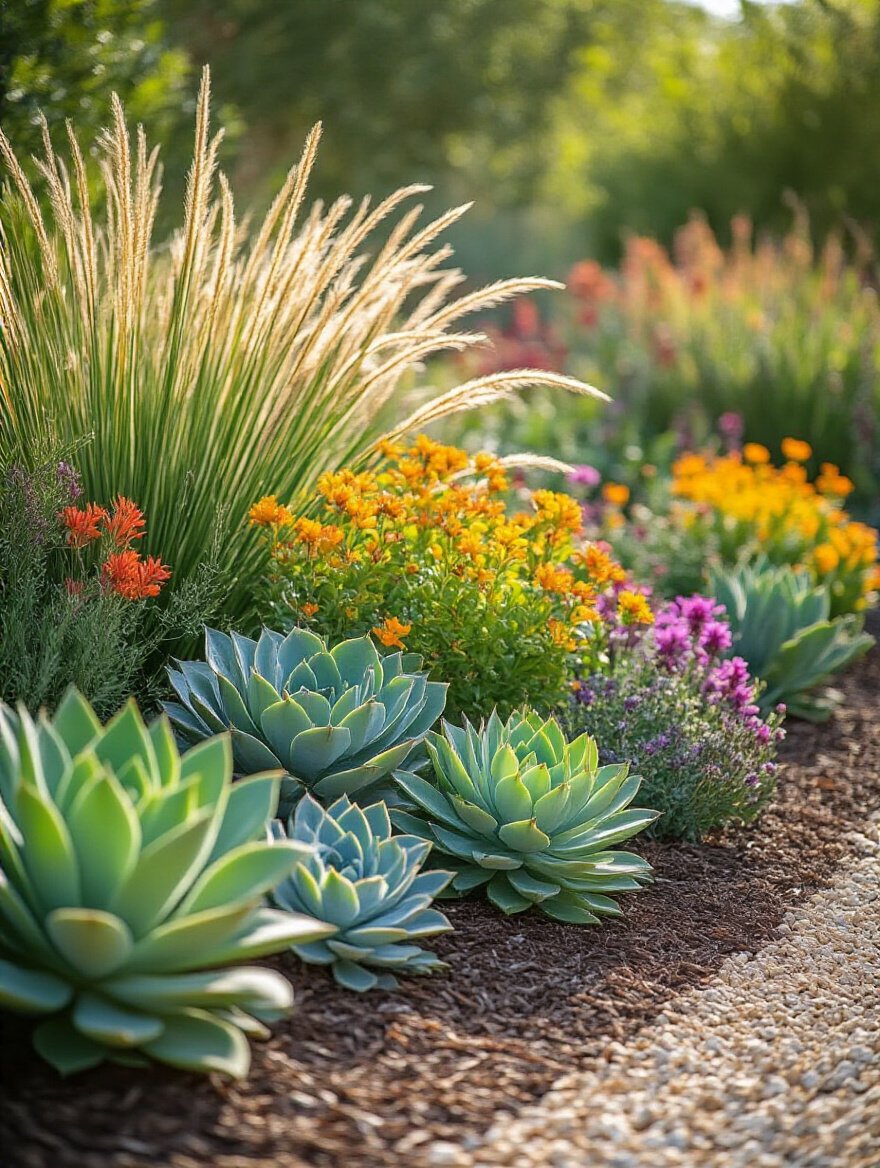
This is a game-changer. Choosing plants that are naturally adapted to your climate means less watering, less stress, and fewer dead plants. It’s the ultimate shortcut to a gorgeous, low-maintenance garden. Look for native plants first—they evolved to thrive right where you live. This isn’t about deprivation; it’s about smart design. You’re creating a resilient, beautiful space that looks great even when the weather isn’t cooperating, all while saving water and time.
Now that you’ve chosen water-wise plants, let’s make sure they get water in the smartest way possible.
5. Map Out Efficient Irrigation Zones for Targeted Watering
You know those big, dumb sprinklers that just spray water everywhere—on the lawn, on the plants, on the driveway, on the house? That’s not irrigation; it’s just making it rain inefficiently. True efficiency comes from zoned irrigation. Think of it like zoned lighting in a house. You don’t have one giant light switch for every room, right? You have different lights on different switches for different purposes. Your garden needs the same logic.
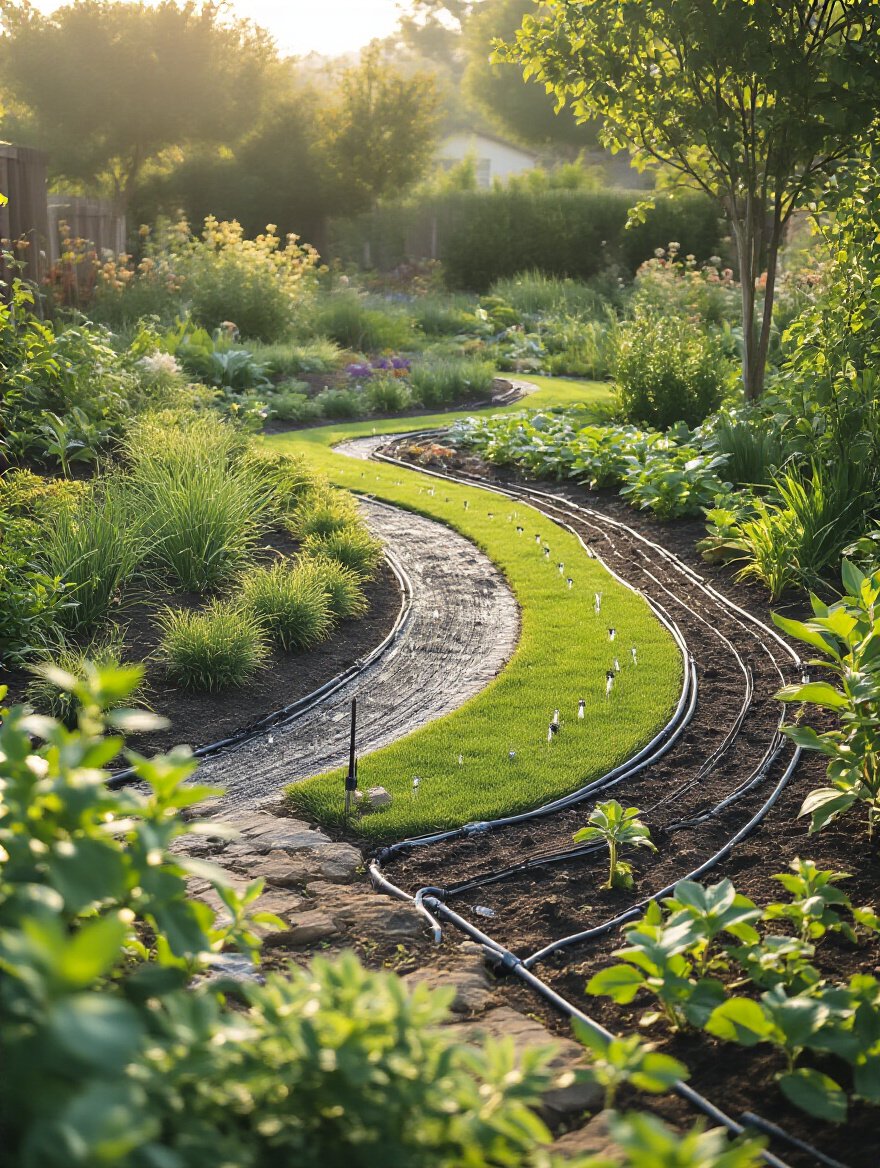
Your thirsty vegetable garden has totally different water needs than your drought-tolerant lavender or your patch of lawn. Lumping them all onto one system is incredibly wasteful. The secret is to group plants with similar water needs together (this is called “hydrozoning”) and give each zone its own dedicated drip line or micro-spray system. This way, you’re delivering water precisely where it’s needed, at the root zone, with minimal evaporation or runoff. It’s a technical solution, but the result is simple: healthier plants and a much lower water bill.
Cultivation Excellence: Smart Planting & Techniques
Okay, the foundation is solid. Now we get to the artistry—the techniques that take a good garden and make it great. This is where you move beyond just keeping plants alive and start creating a dynamic, self-sufficient ecosystem. This is the stuff that makes your garden look like it’s managed by a pro.
6. Practice Companion Planting for Enhanced Plant Protection
I used to think companion planting was just some old folk tale. Then I saw it work. I had a client who was constantly battling aphids on her roses. She tried everything. Finally, an old-school gardener told her to plant garlic and chives around the base of the rose bushes. The next season? Barely any aphids. It wasn’t magic; it was chemistry. The scent of the alliums was actively repelling the pests.
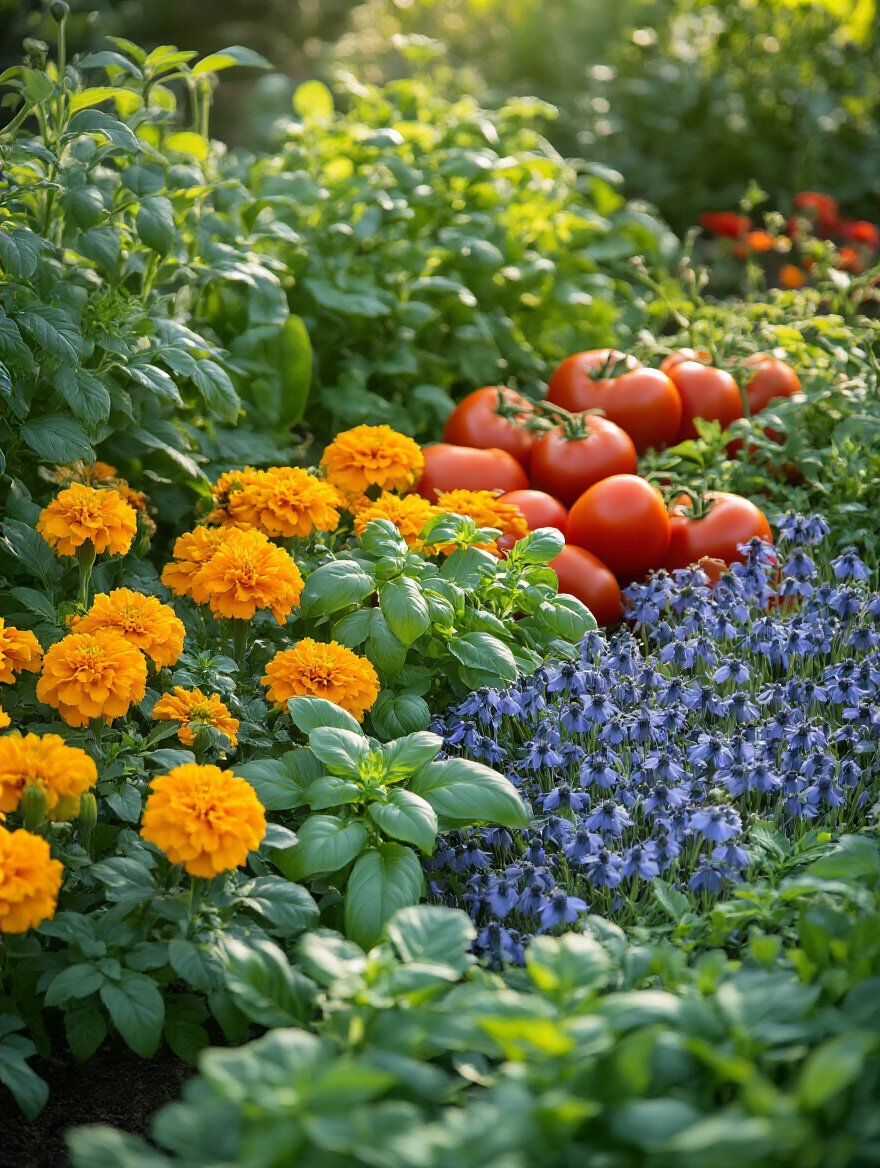
That’s the core idea. Some plants are natural allies. Some repel pests, others attract beneficial insects (like ladybugs that eat aphids), and some even improve the soil for their neighbors. The noise you can ignore is the complicated, encyclopedic charts. Just start with the classics: planting marigolds near tomatoes to deter nematodes, or basil near tomatoes to supposedly improve their flavor and repel hornworms. It’s like having a little security team built right into your garden beds, reducing the need for chemical intervention.
This natural, systems-based approach starts from the ground up, which brings us to the single best thing you can do for your soil.
7. Improve Soil Health by Integrating Nutrient-Rich Composting
Let’s be honest: compost isn’t glamorous. It’s literally rotting garbage. But in the world of garden design, it’s black gold. You can spend a fortune on fancy plants and fertilizers, but if your soil is dead, sterile dirt, you’re fighting a losing battle. Healthy soil is a living ecosystem, buzzing with microbes and fungi that break down nutrients and feed your plants. Compost is the food that fuels this entire system.
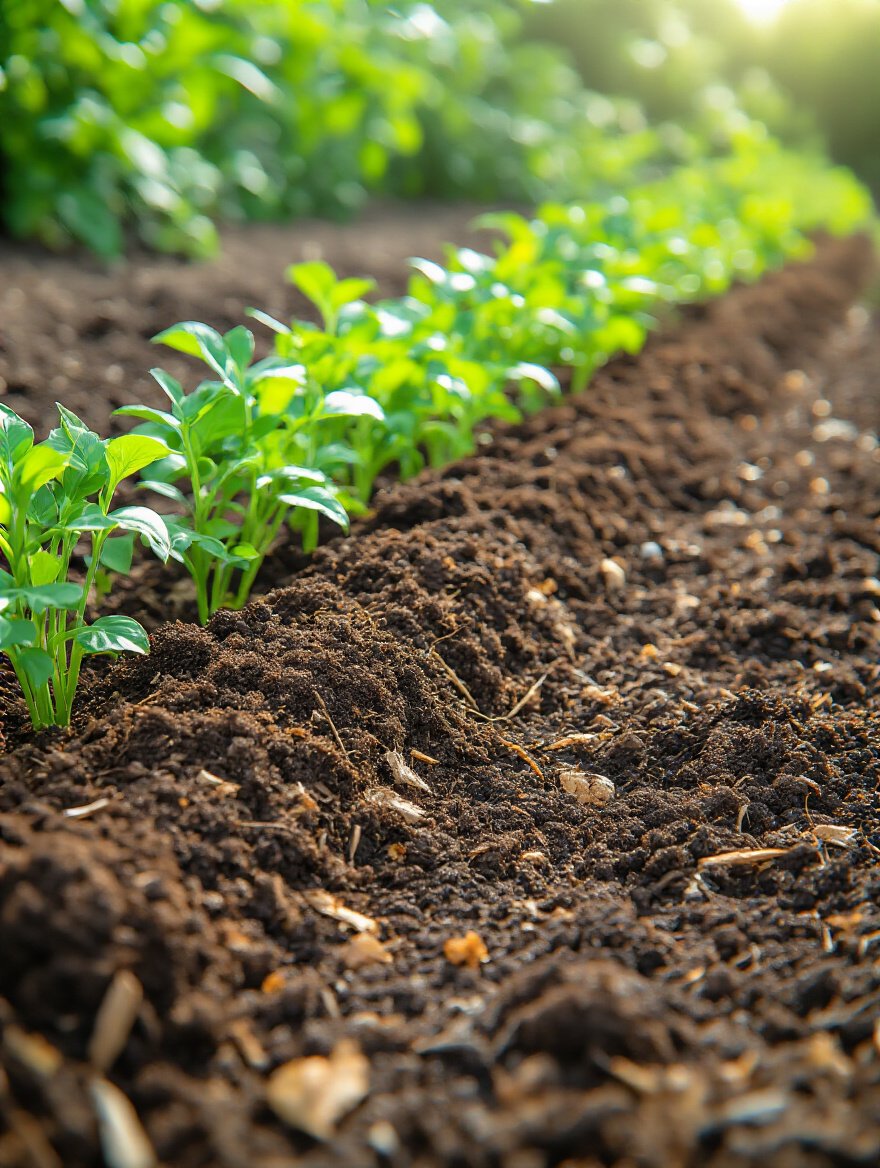
I learned this the hard way when I set up my first vegetable garden. I used bags of cheap topsoil and wondered why everything was stunted and sad. A friend convinced me to start a compost pile. A year later, I worked that rich, dark compost into the beds, and the difference was night and day. Everything was bigger, healthier, and more vibrant. Forget the chemical fertilizers. Start a simple compost pile with your kitchen scraps and yard trimmings. It’s the ultimate shortcut to building living, breathing soil that will make everything you plant in it thrive.
With that rich, healthy soil as your foundation, you can start creating a garden that truly gives back to the environment.
8. Choose Regional Native Plants to Attract Local Pollinators
Everyone loves watching butterflies and bees in the garden. But here’s the BS everyone else says: “Just plant lots of colorful flowers!” It’s not that simple. Most of those generic, pretty flowers at big-box stores are like junk food for pollinators. They might offer a sip of nectar, but they don’t provide what local bees and butterflies really need to survive and reproduce. The real secret is planting regional native species.
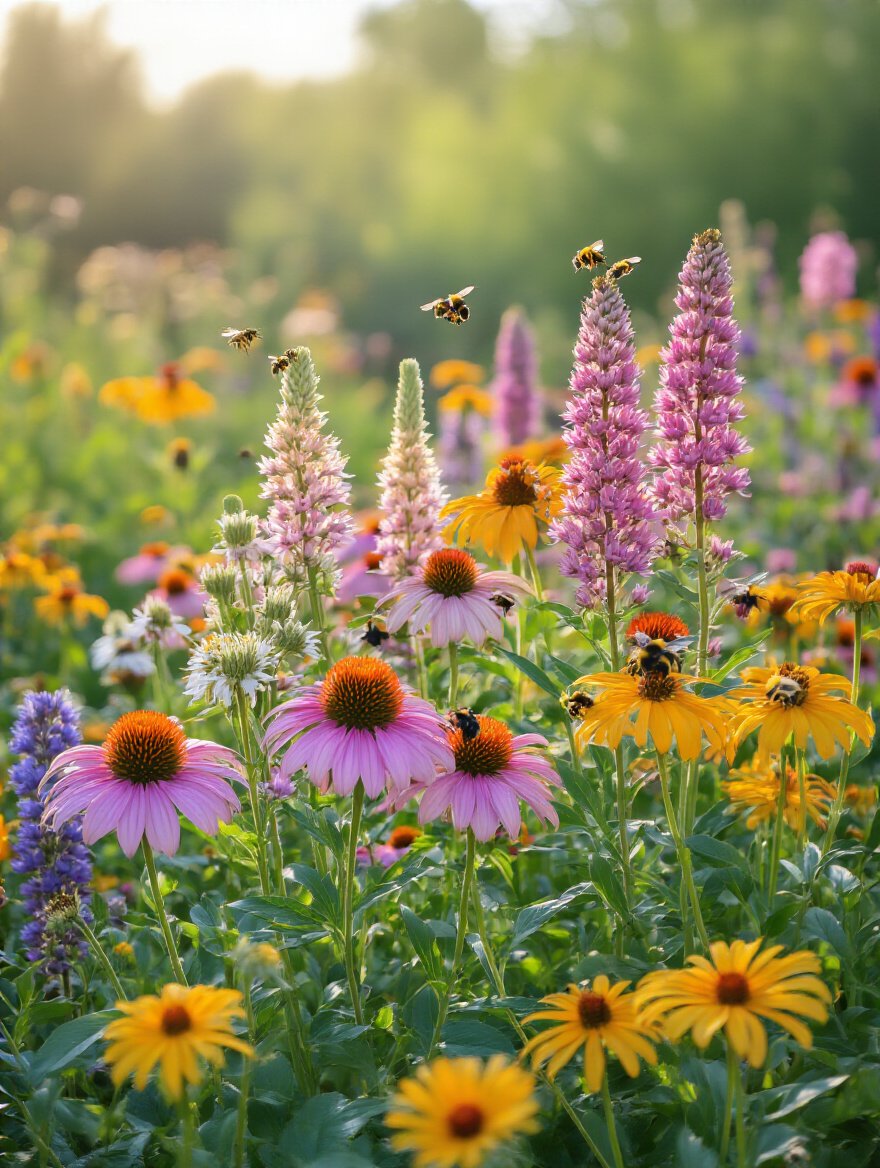
Native plants co-evolved with your local pollinators, meaning they offer the perfect food, at the right time of year, for the insects that live in your specific area. Think of it as a custom-catered meal instead of a generic buffet. The National Wildlife Federation has an amazing online “Native Plant Finder” where you can enter your zip code and get a list of the exact plants that will support the most life in your backyard. Focusing on natives is the fastest way to turn your garden from a pretty, sterile space into a buzzing, vibrant ecosystem.
From creating a living ecosystem on the ground, let’s talk about building up for better results.
9. Install Elevated Garden Beds for Improved Drainage Solutions
Picture this: You’re standing in a yard with dense, heavy clay soil where water just sits forever. Trying to grow carrots or anything that needs good drainage in that is pure frustration. I watched a client struggle for two years before they gave up. The solution isn’t to try and fix ten tons of bad soil; it’s to rise above it. That’s the magic of elevated garden beds.
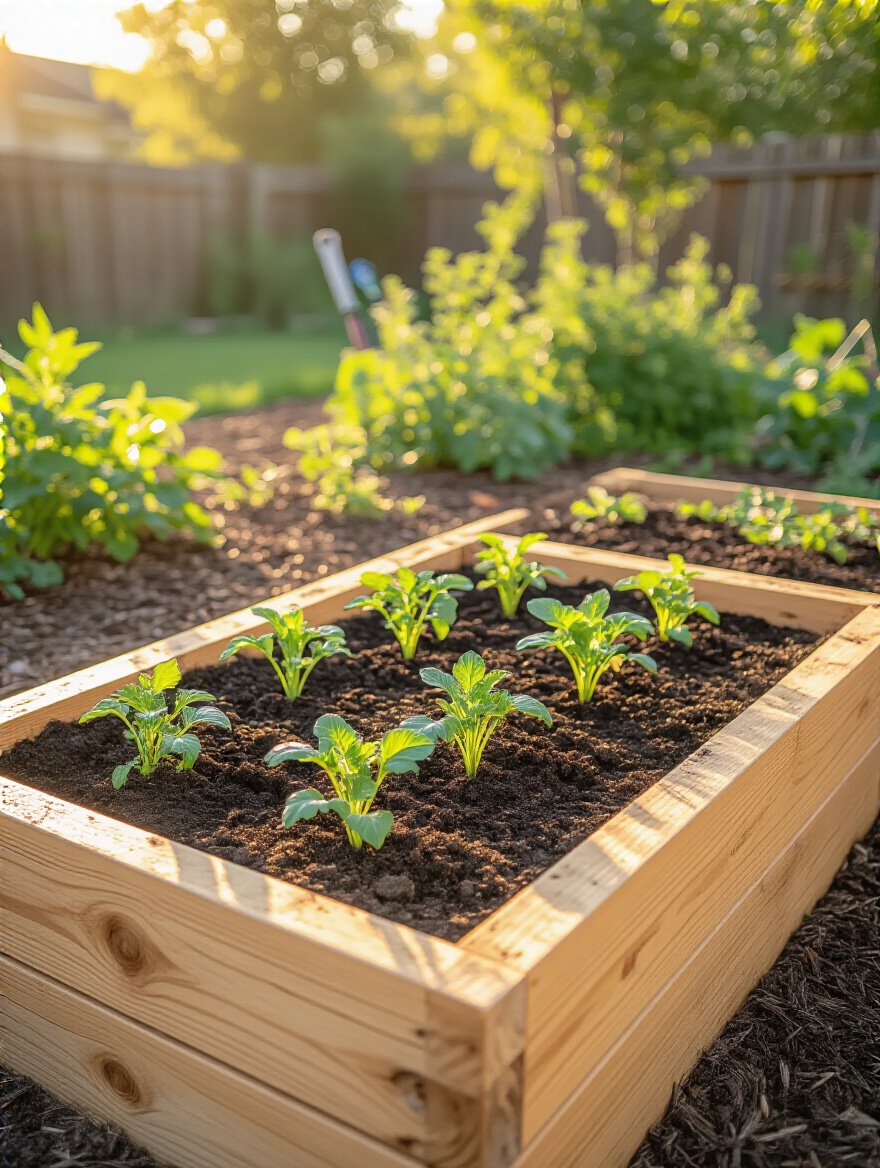
A raised bed is essentially a perfect, custom-made gardening environment in a box. You get to control everything: the drainage, the soil composition, the nutrients. Because the soil isn’t compacted by foot traffic, it stays light and airy, which plant roots love. They also warm up faster in the spring, which can extend your growing season. The shortcut here is to not fight your native soil if it’s terrible. Build a raised bed, fill it with a perfect mix of compost and topsoil, and get incredible results from day one.
Raised beds solve problems on the ground, but what if your biggest problem is a lack of ground space itself?
10. Implement Vertical Gardening Solutions for Maximizing Small Spaces
I’ve noticed something weird lately: people with tiny balconies are growing more food than people with quarter-acre lots. How? They’re thinking in three dimensions. Vertical gardening is one of the most brilliant solutions for anyone with limited space. It’s a complete game-changer, transforming a blank wall or a boring fence into a lush, productive green space.
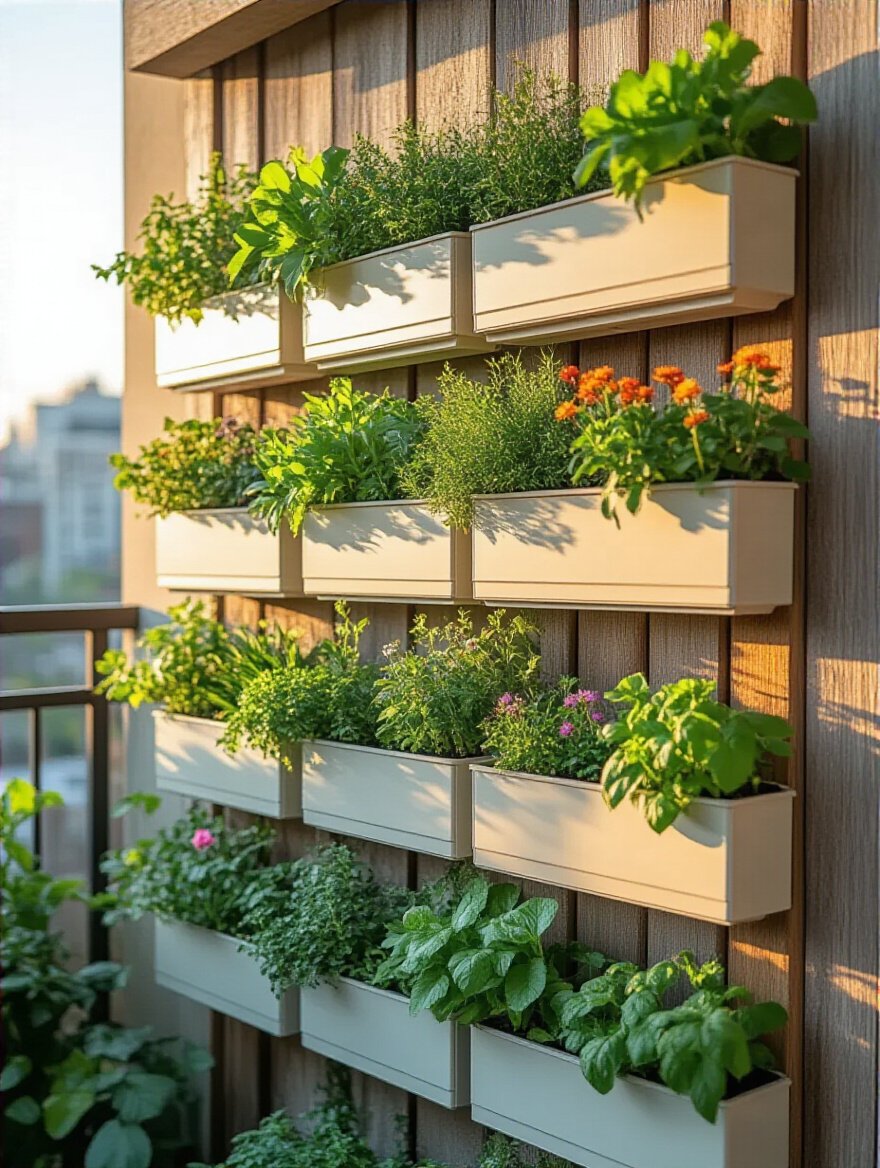
This isn’t just about aesthetics; it’s about pure efficiency. You can use stacked planters, wall-mounted pockets, or trellises to dramatically increase your growing area. I’ve seen people create entire herb and salad gardens on a 4×6 foot patch of a wall. It’s perfect for city dwellers, but it’s also a smart move for anyone who wants to maximize their yield. You get a huge visual impact and a surprising amount of produce from a footprint that’s practically zero.
Maximizing space is one thing, but maximizing your soil’s health with minimal effort is a whole other level of smart.
11. Adopt No-Dig Gardening Methods for Healthier Soil Ecology
Can we talk about how much everyone gets this wrong? For decades, we were told that the key to a good garden was to till the soil every spring—churn it all up. It turns out that’s one of the worst things you can do. Digging destroys the delicate “soil food web,” that intricate network of fungi, worms, and microbes that is the true engine of a healthy garden. No-dig gardening is the simple, powerful alternative.
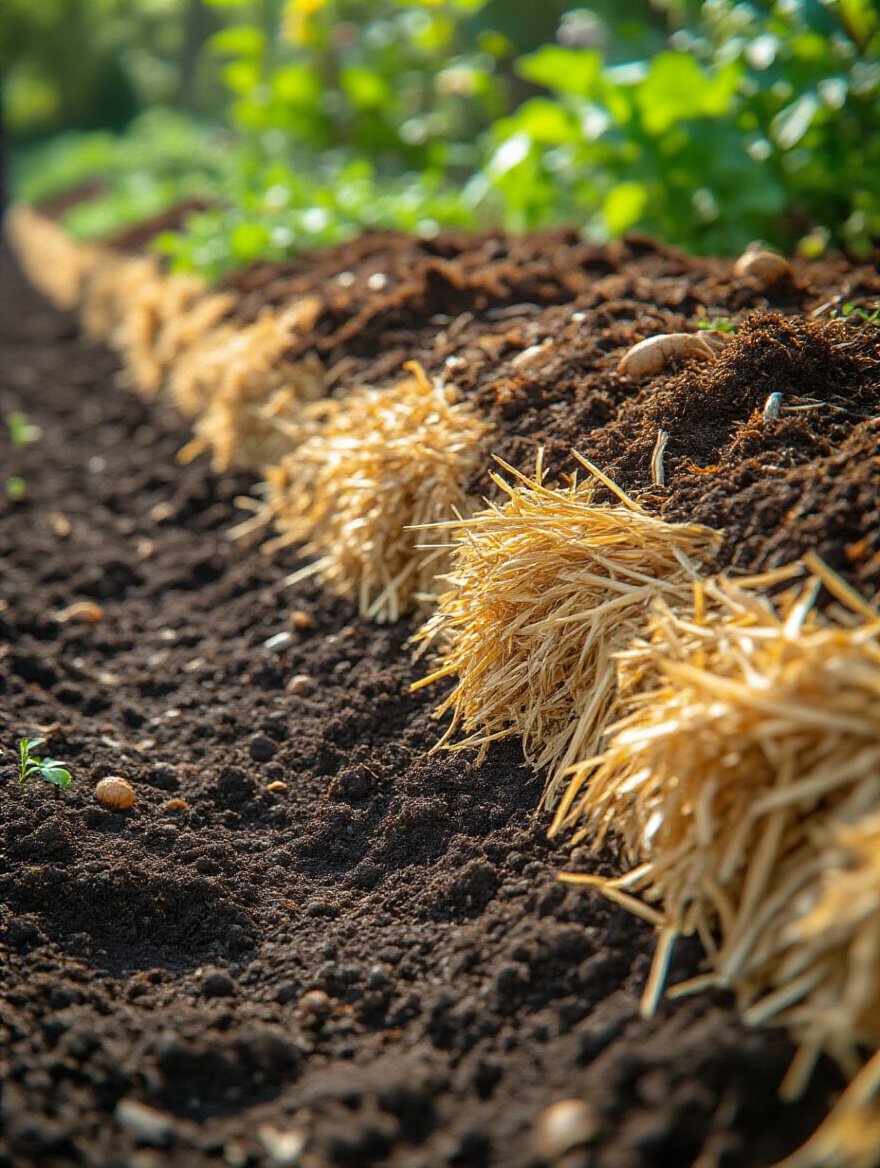
Here’s how it works: you lay down a layer of cardboard right on top of your grass or weeds to smother them. Then, you pile a thick layer of compost on top of that. That’s it. You plant directly into the compost. I was skeptical until I tried it. I set up a new bed in under an hour with no digging. The results were astounding—fewer weeds, healthier plants, and soil that got better every single year. It feels like a cheat code, but it’s just working with nature instead of against it.
Elevating Aesthetics & Biodiversity Through Design
With the core cultivation handled, we can now focus on the layers that create real beauty and life. This is where your garden transforms from a simple plot of plants into a designed sanctuary. These are the elements that create mood, attract wildlife, and make your space a joy to be in.
12. Add Decorative Border Edging for Visually Defined Garden Zones
Nothing screams “amateur” faster than a messy, undefined edge between a lawn and a garden bed. That cheap, wavy black plastic stuff? Throw it out. A crisp, clean edge is like a good frame on a piece of art. It creates definition, order, and a polished look that instantly makes your entire yard feel more put-together. It’s a subtle detail with a massive visual impact.
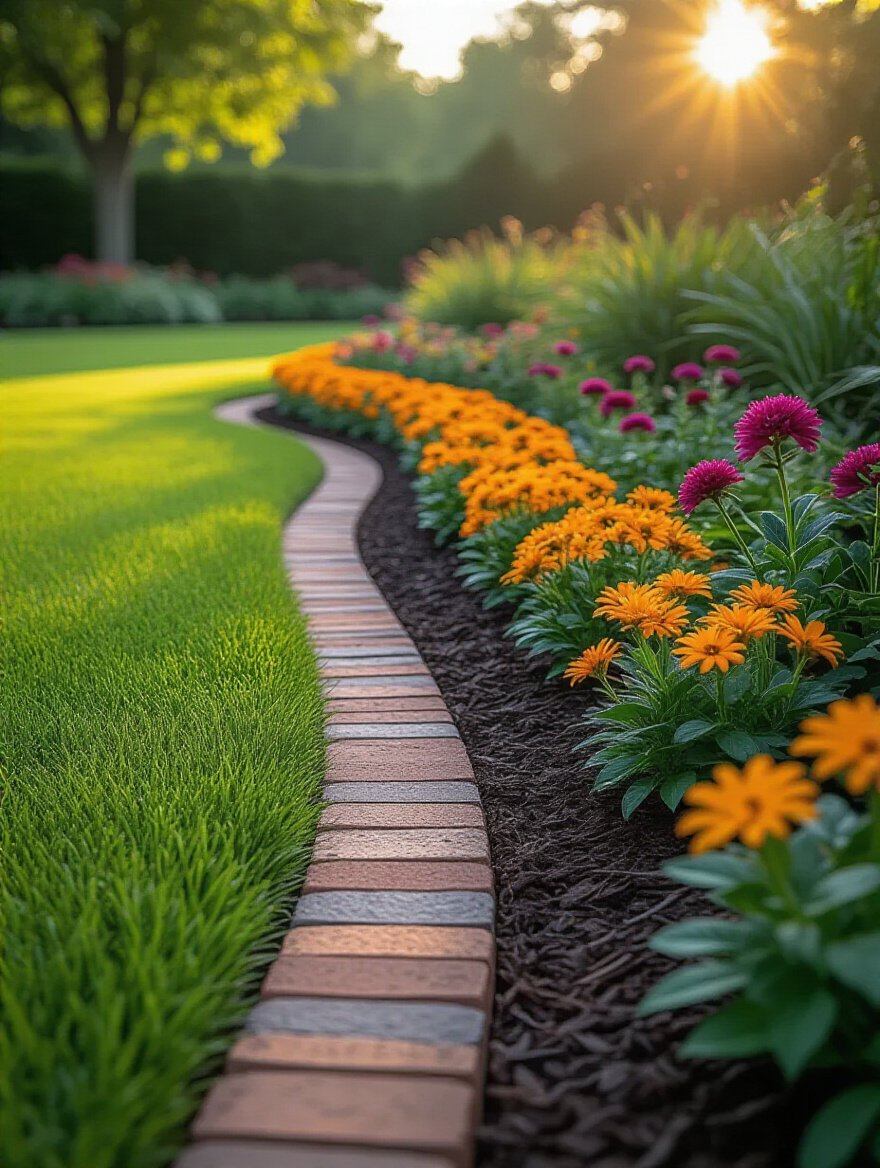
This isn’t just about looks; it’s functional. A solid border of metal, stone, or brick keeps your mulch in the bed and your lawn out of it, drastically cutting down on your weeding and maintenance time. I once spent an entire Saturday on my hands and knees pulling grass out of a flowerbed. I went out the next weekend and installed simple steel edging, and the problem was solved. Permanently. It’s a one-time investment that pays you back every single season.
With your “artwork” now properly framed, it’s time to fill the canvas with life.
13. Cultivate Pollinator-Friendly Flower Patches to Boost Local Ecosystems
If you want your garden to feel alive, you need to invite life into it. Creating a dedicated patch for pollinators isn’t just a nice thing to do for the bees; it’s a design choice that adds movement, color, and energy to your space. A static garden is pretty, but a garden buzzing with bees, butterflies, and hummingbirds is truly magical. It turns your yard into a dynamic, ever-changing nature show.
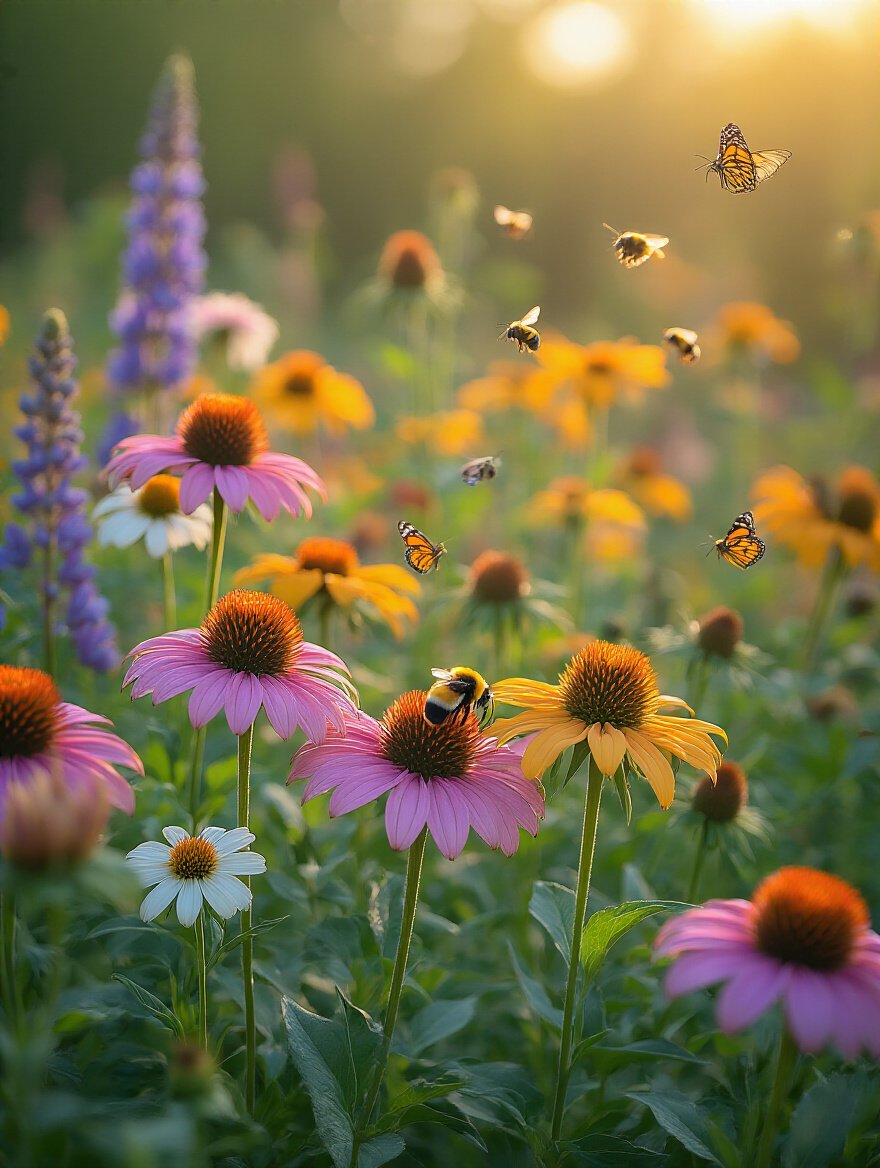
The key, as we talked about before, is to focus on native plants. But take it a step further: plant them in large drifts or clusters. A single coneflower might get overlooked, but a patch of a dozen becomes a high-visibility target for every pollinator in the neighborhood. And don’t forget a continuous bloom cycle. Choose plants that flower at different times—spring, summer, and fall—so your pollinator friends always have a meal waiting for them. It’s a simple strategy for creating a garden that’s as ecologically valuable as it is beautiful.
To further elevate your garden’s status as a wildlife haven, you need to add the most critical element of all.
14. Build a Calming Water Feature Attracting Desirable Garden Wildlife
Light and sound are the two most powerful tools for creating atmosphere, both indoors and out. A water feature introduces both. The gentle sound of moving water is instantly calming and can help mask unwanted neighborhood noise. The way light reflects off the water’s surface, day or night, adds a layer of shimmer and movement that you can’t get any other way.
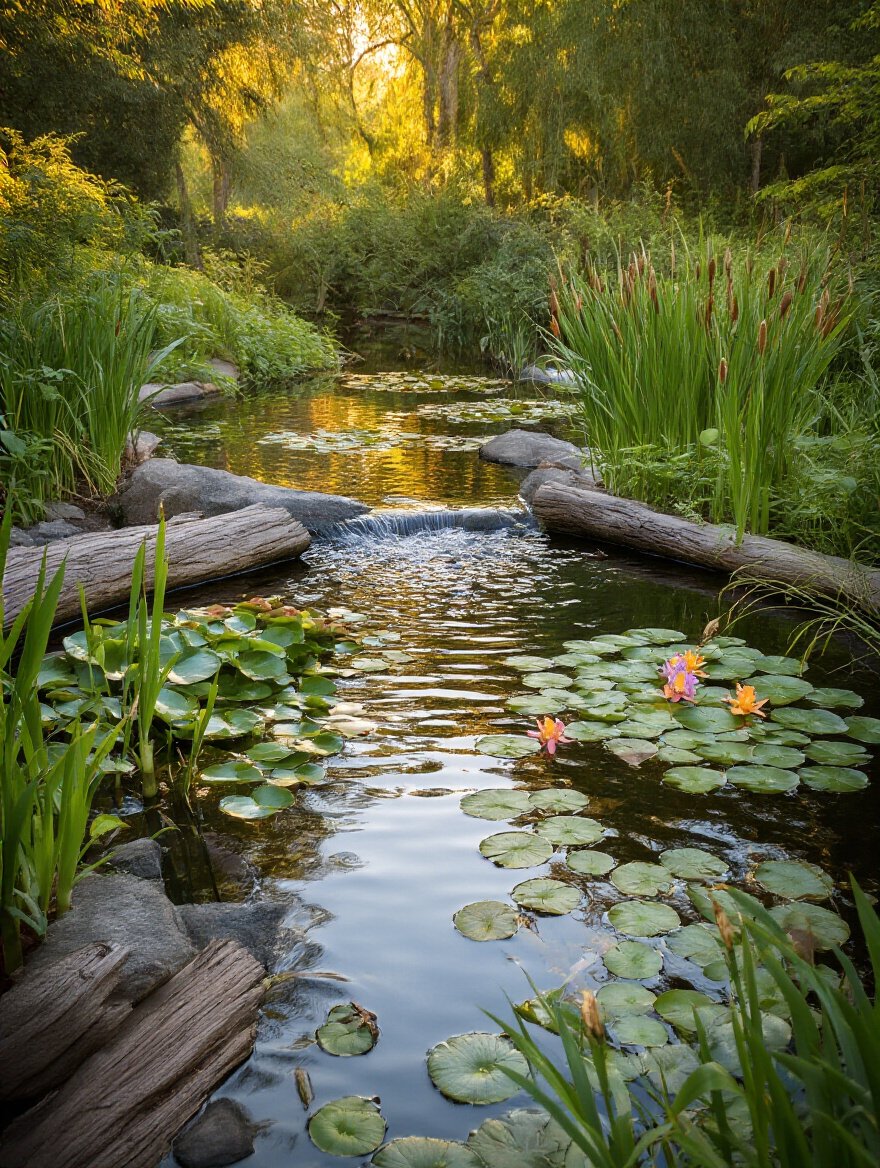
But it’s also the number one thing you can add to attract more wildlife. Birds, dragonflies, even frogs will flock to a reliable water source. You don’t need a giant, expensive pond. A simple bubbling urn or a small birdbath can have a huge impact. I have a client who installed a small disappearing fountain (where the water bubbles up through rocks and drains into a hidden reservoir). Within a week, their garden was the neighborhood hot spot for birds. It’s an instant ecosystem upgrade.
Now that you have beautiful features to visit, you need to make sure you can actually get to them.
15. Design Functional Pathways for Accessible Garden Navigation
What’s the point of having a beautiful garden if you can’t move through it easily? Pathways are the unsung heroes of landscape design. They are the “hallways” of your outdoor rooms, guiding your feet and your eyes through the space. A well-designed path creates a sense of journey and discovery, inviting you to explore what’s around the next bend.
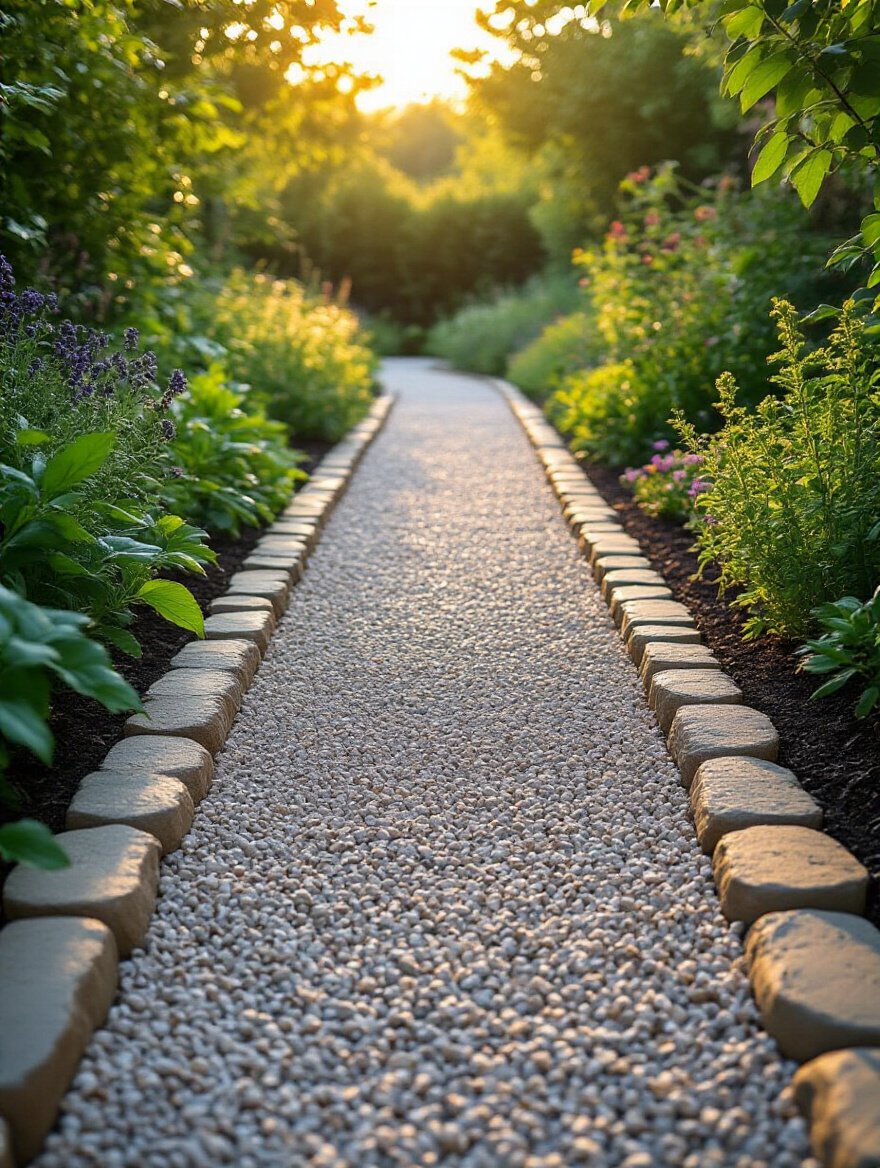
Think beyond just getting from Point A to Point B. The material you choose—flagstone, gravel, brick, wood—sets the tone for the garden. The shape of the path, whether it’s a direct line or a gentle curve, controls the pacing and the mood. And critically, a solid, wide path makes your garden accessible to everyone, from kids on trikes to grandparents with walkers. It’s a practical element that has a profound effect on how your garden is experienced.
Of course, that experience shouldn’t have to end when the sun goes down.
16. Integrate Strategic Outdoor Lighting for Evening Garden Ambiance
Can we please, for the love of all that is holy, talk about why everyone gets outdoor lighting so wrong? People go to the big box store, buy the brightest, harshest floodlights they can find, and point them at the house. The result? A home that looks like a high-security prison and a yard shrouded in glare and dark shadows. It’s awful. Good lighting isn’t about making everything bright; it’s about revealing beauty through a delicate play of light and shadow.
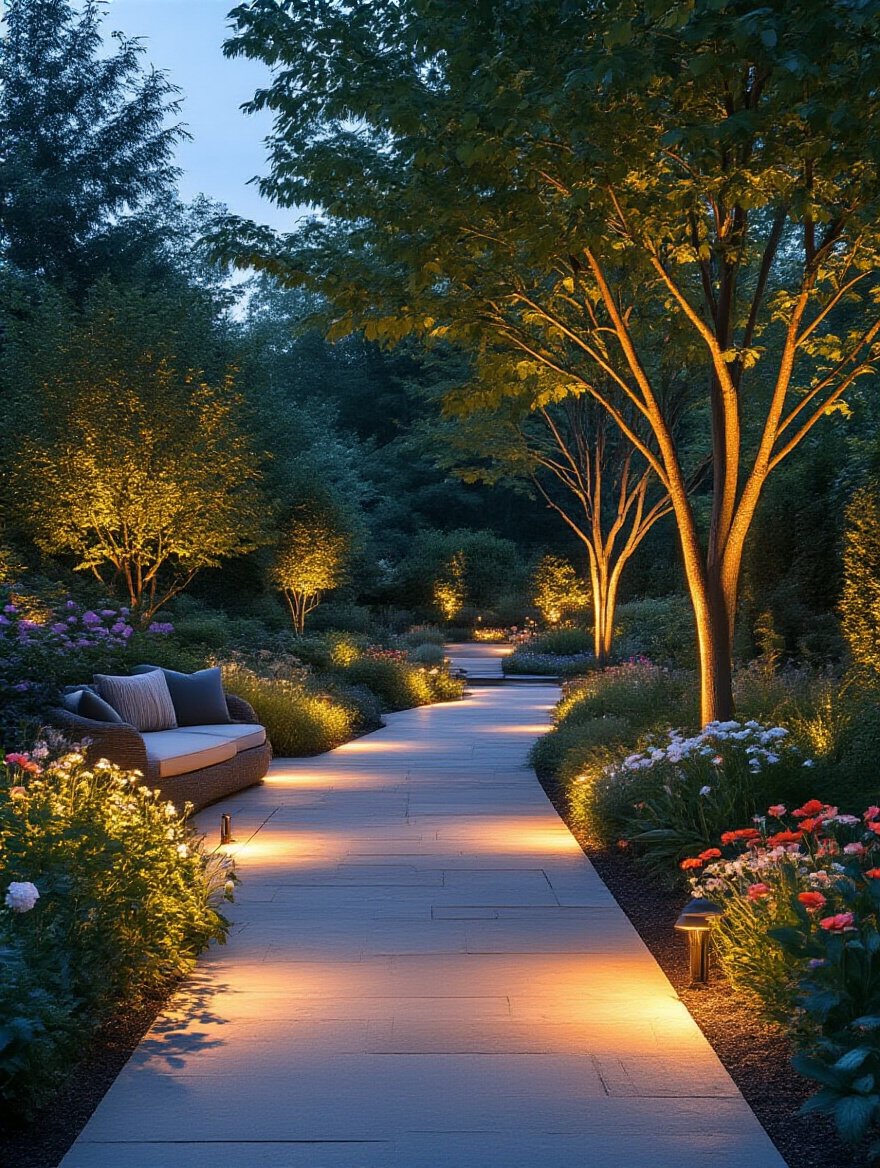
Here’s the secret every lighting designer knows: you need to think in layers.
- Ambient Light: This is the soft, general glow. Think string lights over a patio or soft wash lights on a hedge. It makes the space feel safe and inviting.
- Task Light: This is for safety and function. It’s the light on your stairs, by the grill, or along a pathway. It’s there so you don’t break your neck.
- Accent Light: This is the magic. It’s the uplight that makes a Japanese Maple glow like a sculpture. It’s the light inside a water feature that makes it shimmer. This is what creates drama, depth, and a “wow” factor.
I once worked with a client whose garden was their pride and joy, but it vanished at sunset. We installed a few strategically placed, low-voltage LED uplights on their best trees and a soft wash on a stone wall. We lit the pathways for safety, not with little soldiers lining the walk, but with fixtures that cast gentle pools of light right where you needed them. The transformation was absolute. Their property suddenly felt twice as big, and their garden became a breathtaking focal point they could enjoy year-round, from inside and out. It’s the single most effective way to elevate your outdoor space.
From light to life, let’s bring in one of the most delightful additions to any garden.
17. Create a Dedicated Butterfly Garden with Specific Nectar Plants
Creating a butterfly garden is like adding a layer of living animation to your landscape. It’s one thing to have pretty flowers, but it’s another thing entirely to have them constantly visited by a silent, graceful dance of color. This goes beyond just general pollinator planting; it’s a more focused effort to support the entire lifecycle of butterflies, which makes for an even more rewarding experience.
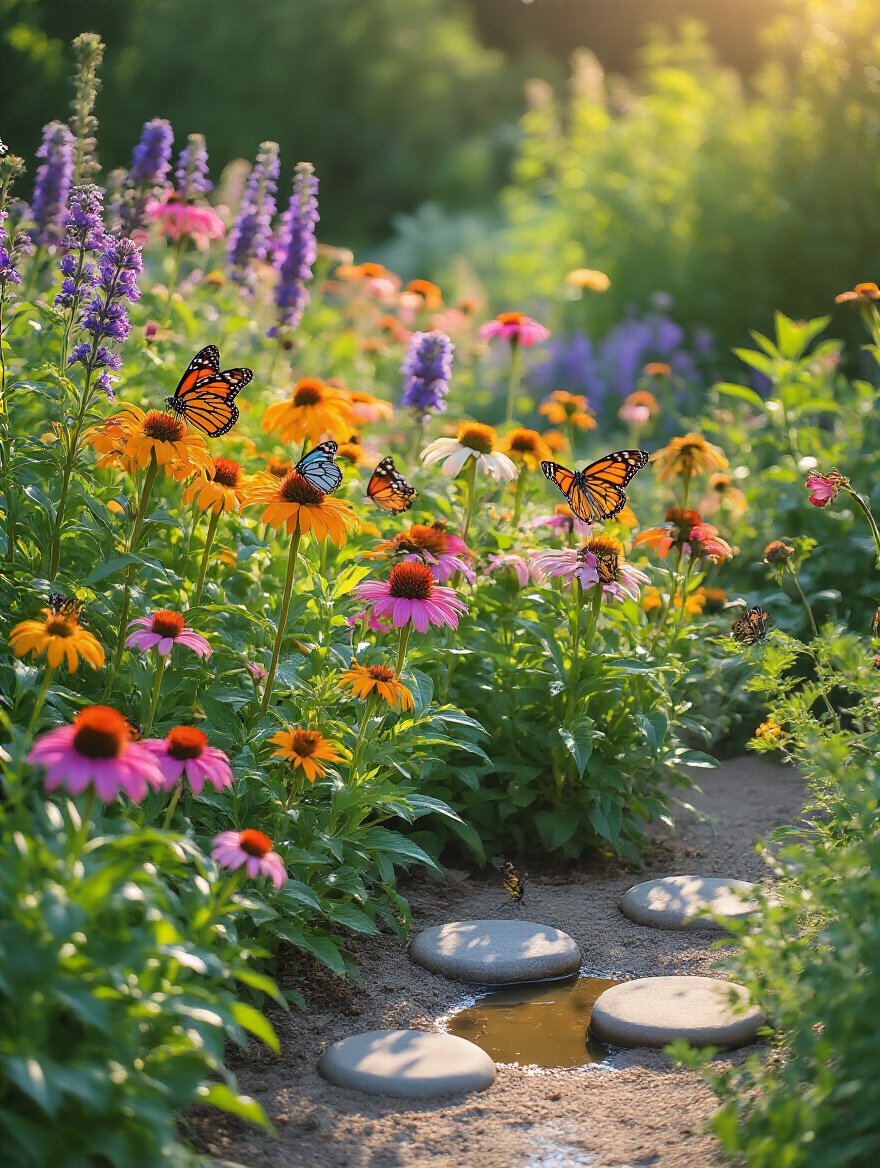
The absolute key that everyone misses is the host plant. Nectar plants like coneflower and salvia are great for feeding adult butterflies, but they need specific host plants to lay their eggs on so their caterpillars have something to eat. Monarch butterflies only lay their eggs on milkweed. Black Swallowtails need plants from the carrot family, like parsley, dill, or fennel. Planting both nectar sources and host plants is the secret to not just attracting passing butterflies, but actually raising them in your own yard. It’s a truly incredible process to watch.
A thriving, living garden requires a gentle touch. This brings us to the most sustainable way to keep it looking great.
Sustainable Care & Long-Term Garden Maintenance
A great garden isn’t a one-and-done project. It’s a living thing that needs ongoing care. But that care doesn’t have to be a constant, back-breaking chore. Adopting smart, sustainable maintenance practices means you work with your garden’s natural systems, not against them. This approach saves time, saves money, and creates a healthier environment for everyone.
18. Employ Natural Pest Control Methods for Chemical-Free Gardens
Here’s a confession: I used to think the only way to deal with a pest problem was to nuke it with chemicals from a spray bottle. Then I realized I was also nuking all the good guys—the ladybugs, the spiders, the pollinators—and creating a sterile battlefield where the pests would always return. The real pro move is to stop thinking like an exterminator and start thinking like an ecosystem manager.
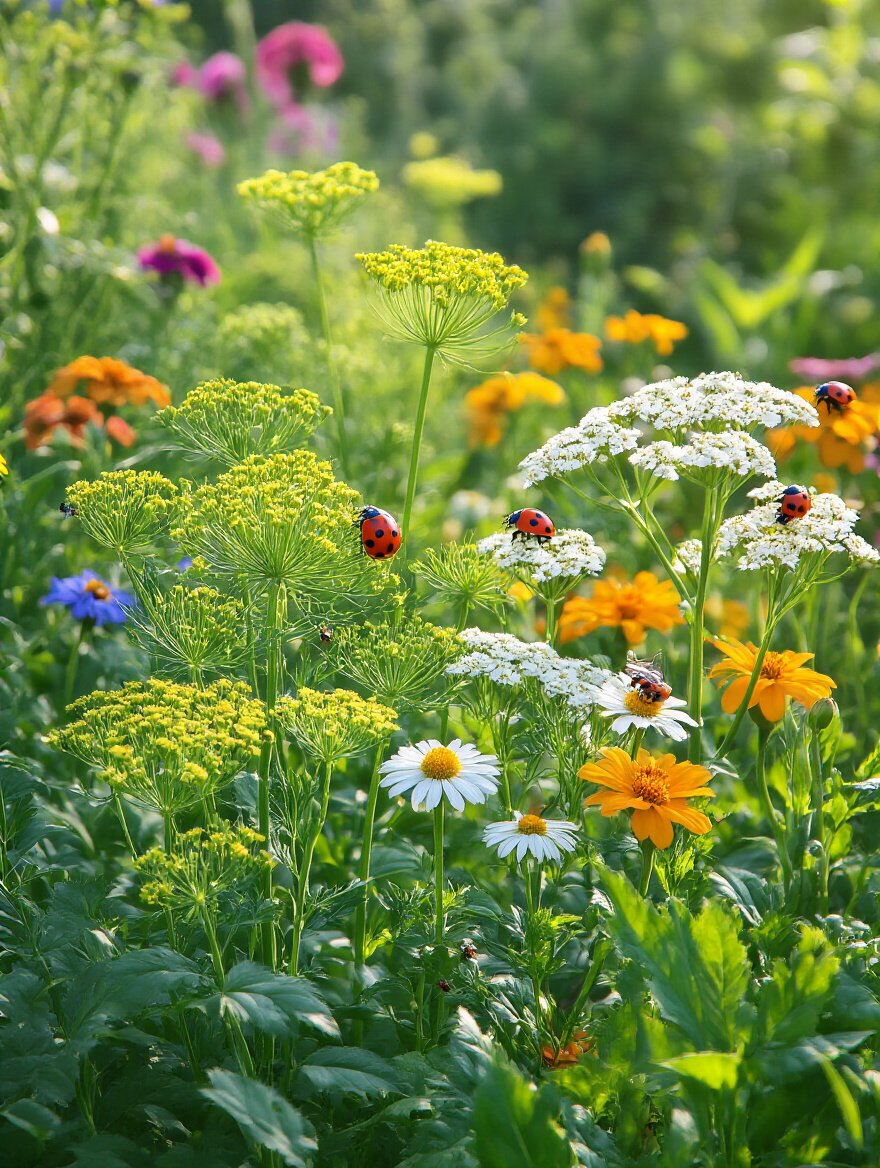
A healthy, diverse garden largely polices itself. If you have a good mix of plants, you’ll attract predatory insects that will keep pests like aphids in check. If your soil is healthy and your plants aren’t stressed, they’re naturally more resistant to attack. When you do have an issue, start with the simplest solution first. A strong blast of water from the hose knocks off plenty of pests. Hand-picking slugs is free and effective. A healthy garden is a balanced garden, not a sterile one.
Just as you manage pests naturally, you should manage your water naturally, too.
19. Harvest Rainwater Efficiently for Sustainable Garden Irrigation
Every time it rains on your roof, you’re getting hundreds of gallons of free, high-quality water delivered directly to your property. And most of us just let it all run down the driveway into the storm drain. It’s insane when you think about it. Installing a rain barrel is one of the easiest, most impactful “brilliant ideas” you can implement. It’s a simple concept that pays off big.
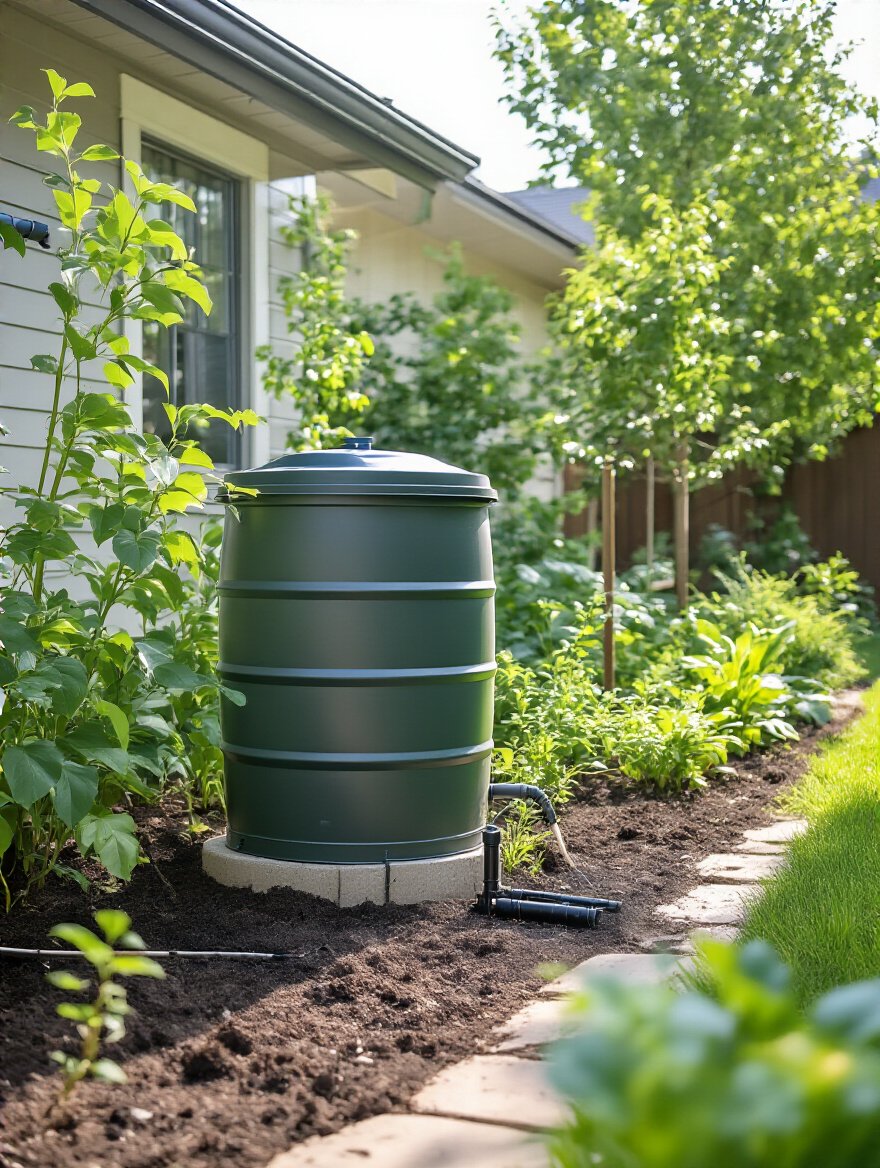
Plants love rainwater. It’s naturally soft, slightly acidic, and free of the chlorine and other chemicals found in municipal tap water. Connecting a rain barrel to your downspout gives you a ready supply of this premium water for your containers and garden beds. In a dry spell, that stored water can be a lifesaver. It reduces your water bill, conserves a precious resource, and is genuinely better for your plants. It’s a win-win-win.
From watering to the weekly chore we all know, let’s optimize your mowing.
20. Mow Your Lawn at Ideal Height for Stronger Root Systems
87% of people with a lawn probably mow it too short. We have this idea that a super-short, golf-course-style cut is the ideal. It’s not. It’s actually scalping your lawn, stressing it out, and inviting weeds to take over. Mowing your lawn a little higher is the single easiest thing you can do to make it healthier and more resilient.

Here’s the simple science: the length of the grass blade above ground is directly proportional to the depth of the roots below ground. Taller grass = deeper roots. Deeper roots mean your lawn is better at finding water during a drought and can out-compete weeds for resources. Taller grass also shades the soil, which helps keep weed seeds from germinating. Just raise your mower deck by an inch or two. The lawn will look just as tidy, but it will be a thousand times healthier.
While we’re talking about cutting, let’s move from the grass to the branches.
21. Master Pruning Techniques for Healthier Plant Structure and Blooms
Bad pruning is like a bad haircut—it looks awful and can take years to recover from. People either get timid and just snip the very tips of branches, or they go wild with a pair of shears and “top” their trees, which is a death sentence. Mastering a few basic pruning cuts is a skill that will pay you back for decades by keeping your shrubs and trees healthy, beautiful, and productive.

Forget the complexity and just remember the “3 Ds.” Your first priority, at any time of year, is to remove any branch that is Dead, Diseased, or Damaged. That alone will vastly improve a plant’s health and appearance. The next step is to look for any branches that are crossing or rubbing against each other. Pick one and remove it. This simple process opens up the plant to better air circulation and sunlight, which means fewer diseases and more flowers. It’s not about butchering the plant; it’s about strategically sculpting it for long-term health.
Finally, let’s address the ground your lawn is growing on, one last time.
22. Perform Regular Lawn Aeration for Improved Nutrient Absorption
If your lawn looks tired, thin, and just won’t green up no matter how much you water or fertilize, there’s a good chance your soil is compacted. This is especially common in new housing developments or areas with a lot of clay. Compacted soil is like concrete for plant roots—air, water, and nutrients can’t get through. You can pour fertilizer on top all day long, but it’s not reaching the roots where it’s needed.
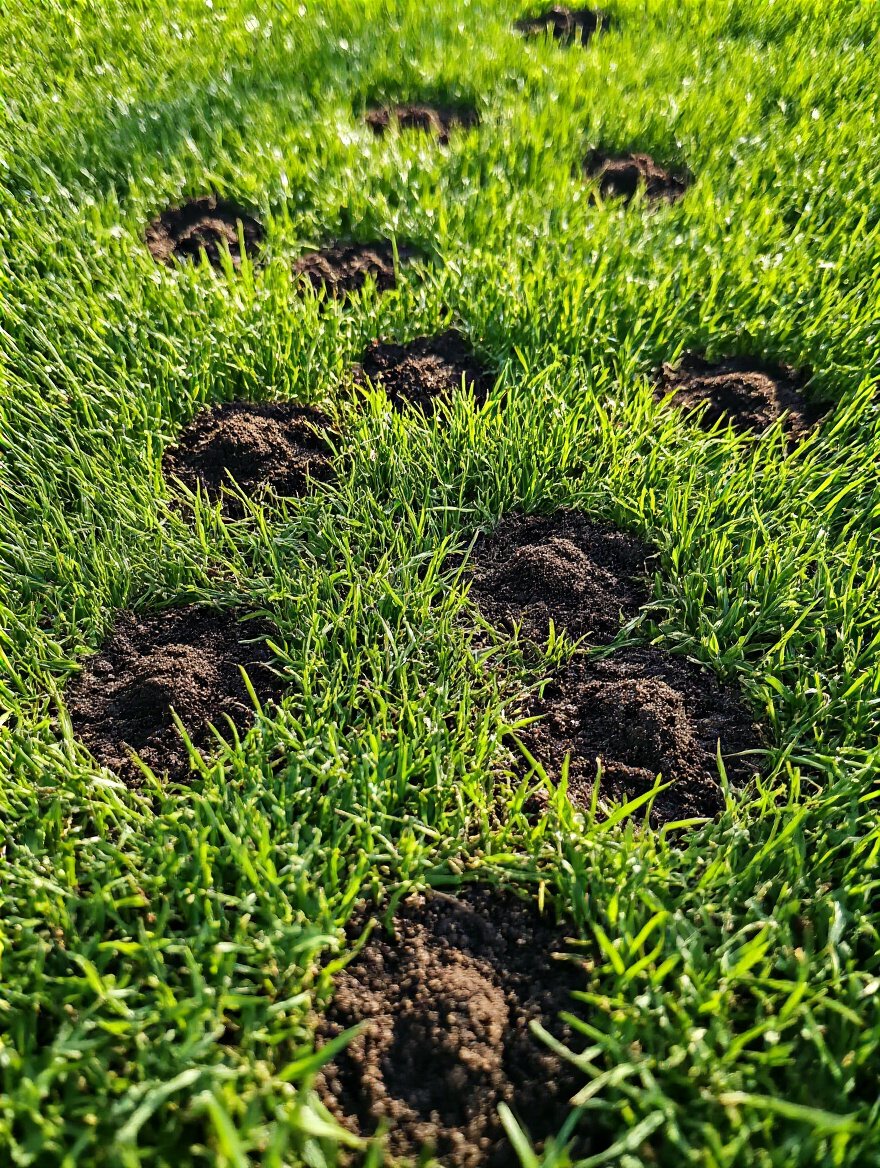
Lawn aeration is the solution. Renting a core aerator (the kind that pulls out little plugs of soil) for an afternoon is a game-changer. It punches holes in the compacted soil, breaking it up and creating channels for everything your lawn needs to thrive. It’s like hitting a reset button on your soil. I’ve seen lawns go from sad and yellow to lush and green in a single season, just from one session of aeration followed by fertilizer. It ensures that all your other efforts aren’t going to waste.
Conclusion: Cultivate Your Dream Outdoor Space
So, there it is. Your garden isn’t a mystery. It’s a design project. It’s a system. From the soil you stand on to the light that fills the space at night, every element works together to create an experience. It’s not about executing all 22 of these ideas tomorrow. It’s about seeing your yard differently—as a room with limitless potential.
Start with one thing. Get that soil test. Spend an afternoon mapping your sun zones. Install one simple uplight on your favorite tree. Each small, intentional step builds on the last, transforming your patch of land from an obligation into a sanctuary. You’re not just planting flowers; you’re creating a space for evening dinners, for morning coffees, for watching butterflies, for living. You’re creating the most beautiful room of your home.

